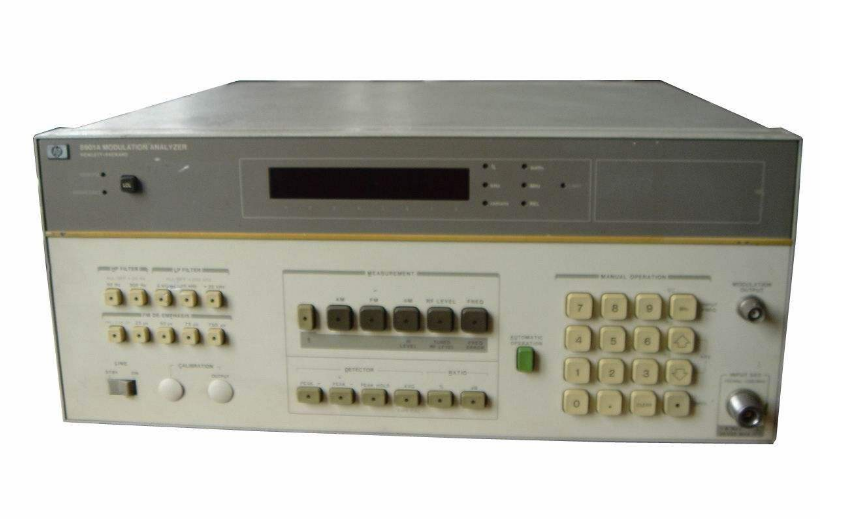
调制度分析仪是一种用于分析调制信号的特性和参数的仪器,主要用于通信系统、广播系统等领域。以下是调制度分析仪的基本原理、作用和使用方法:
原理:
- 信号采集:将待测调制信号输入调制度分析仪。
- 信号处理:对输入信号进行解调或数字处理,提取调制信号的特征参数。
- 参数分析:分析提取的特征参数,如调制度、调制频率、调制深度等。
作用:
- 调制度分析:用于分析调制信号的调制度,即调制信号对载波的影响程度。
- 信号分析:用于分析调制信号的频谱特性、带宽、功率等参数。
使用方法:
- 信号输入:将待测调制信号正确连接到调制度分析仪的输入端口。
- 仪器设置:设置分析仪的工作参数,如调制度范围、分辨率等。
- 信号分析:启动调制度分析仪,进行信号采集和分析。
- 数据处理:根据采集到的数据,进行调制度分析和参数测量。
- 结果展示:将分析结果以图形或数字形式展示,如调制度图、频谱图等。
使用调制度分析仪需要一定的信号处理和仪器操作知识,操作时需注意选择合适的参数设置和分析方法,以确保获得准确的分析结果。
The modulation analyzer is a device used to analyze the characteristics and parameters of modulated signals, mainly in communication systems and broadcast systems. Here's an overview of its principles, functions, and usage:
Principles:
- Signal Acquisition: The modulation analyzer receives the modulated signal to be analyzed.
- Signal Processing: The input signal is demodulated or processed digitally to extract its characteristic parameters.
- Parameter Analysis: The extracted parameters, such as modulation index, modulation frequency, and depth, are analyzed.
Functions:
- Modulation Analysis: It analyzes the modulation index of the modulated signal, which indicates the extent to which the modulation affects the carrier.
- Signal Analysis: It can also analyze the spectral characteristics, bandwidth, and power of the modulated signal.
Usage:
- Signal Input: Connect the modulated signal to be analyzed to the input port of the modulation analyzer.
- Instrument Setup: Set the parameters of the analyzer, such as the modulation index range and resolution.
- Signal Analysis: Start the modulation analyzer to collect and analyze the signal.
- Data Processing: Analyze the collected data to determine the modulation index and other parameters.
- Results Display: Display the analysis results graphically or numerically, such as modulation index plots or spectral plots.
Using a modulation analyzer requires some knowledge of signal processing and instrument operation. Care should be taken to selec appropriate parameters and analysis methods to ensure accurate results.





















